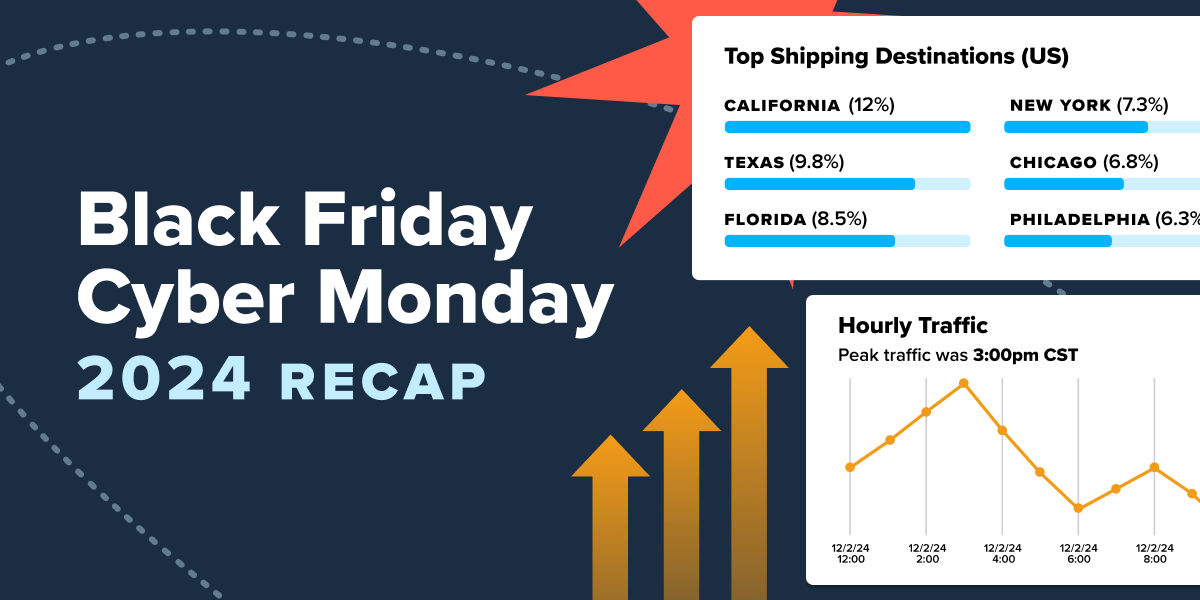Between supply chain issues, a complicated uptick in demand, issues with maintaining stock, and a rapidly evolving consumer appetite, Black Friday and the days surrounding it will look very different this year.
You can read more about the leading trends and predictions we’ve made for the 2020 holiday shopping season here. In this article, we’re diving in deeper, to discover why these changes are happening and what they mean for retailers and customers. Let’s dive in.
Reason 1: Supply Chain Issues
Retailers have battled with Supply Chain issues throughout 2020. And that won’t be going away anytime soon, and it’s sure to impact Black Friday sales. Physical supply, and the logistics required to move it, have been severely impacted both by reduced transportation coverage and required social distancing measures which impact warehouse operations.
As early as April, 36% of retailers were already facing supply chain slow downs. A month into the crisis’ impact in the U.S., this number has continued its upward trend. This has plunged retailers into trouble even further, especially since retailers are still facing numerous issues. Another survey polled 105 ecommerce retailers and revealed a common thread in their challenges.
When asked what supply chain issues they’re currently facing, here’s what they said:
- Warehouse operators are ill or in quarantine, 59 percent;
- Store operators are ill or in quarantine, 48 percent;
- Lack of visibility of capacity at suppliers, 46 percent;
- Lack of demand visibility from customers, 44 percent;
- Protective material (masks, gloves) for own employees, 40 percent;
- Inbound flow of raw material parts and components, 36 percent;
- Outbound transportation (delivery) to customers, 24 percent.
While it’s clear that many issues stem from an actual lack of access to supply, many are tied to transportation. Though air cargo and passenger travel are separate parts of the airline industry, both acutely affect the other.
Since March, 98% of passenger air travel have been either to or from (or both) locations that are affected by COVID travel restrictions. This has led to a deficit of more than 500 million passengers. Given this dramatic downturn, air cargo has followed the trend with significantly fewer flights bringing in raw materials and imported products. Flights that regularly carry both passengers and cargo are now restricted to cargo-only, completely erasing the inherent subsidies that come with carrying both.
As the world’s largest exporter, China has suffered a major downturn, with Chinese imports to the U.S. dropping 50% between January and March 2020. For retailers and suppliers alike, it’s the perfect storm. Limited access to air cargo results in restricted access to raw materials and products. Even when materials are available, warehouse and manufacturing personnel require unprecedented safety measures, slowing production and raising costs.
Reason 2: Demand is Already High, but Not Everyone Can Participate
Consumer shopping habits have changed. A lot. With COVID restrictions approaching the six-month mark, millions of customers have adapted to online shopping. However, not everyone is spending more than before. While plenty of folks remain employed in steady jobs and working either remotely or in person, unemployment continues to hover around 10%.
This disparity in employment is having a significant impact on online spending. It draws a sharp divide between the haves and the have-nots, in a more literal way than ever before. Those without jobs or who are in unpredictable financial situations are likely to spend less, approaching the holiday season conservatively. Those with steady employment who are feeling about the same financially as in years past may mark an opportunity for retailers looking to make up lost revenue.
The Spenders
Folks who are comfortable financially may be willing to spend more this holiday to begin with for several reasons. First, with less time and money devoted to everyday out-of-home activities – think commuting, eating out, social events – they’ve got more disposable income than ever, an estimated increase of 5-7% on average, a big number considering the billions in lost employment income factored into the average.
With more time and money on their hands, people are making life interesting by going online to buy items they never have before. Many consumers are refreshing their homes, which have become home offices, adding furniture, decor and home improvement materials to their online shopping lists. Others are pursuing new hobbies that can be done at home, like baking, painting, crafting, woodworking or self-improvement. One key trend that’s cropped up is in the realm of sports and fitness. With gyms largely unavailable and a resounding sense of restlessness, people are getting more creative than ever with home workouts. Peloton, the highly Instagram-worthy spin bike saw sales skyrocket 66% year-over-year by May.
Because these changes have been ongoing since March, demand is already high, and so is spending. Most shipping companies are operating at near peak levels, proving an intense demand for ecommerce delivery.
The Thrifty Buyers
For the cohort of buyers concerned about finances this season, big-box retailers and Amazon are expected to bring up the slack. With bargain hunters on the search for classic Black Friday deals, retailers offering deals on standard holiday items like televisions and electronics, home goods, and toys will win their business.
Reason 3: Stock Issues (or Lack Thereof)
Regarding stock, the issues surrounding holiday shopping are twofold. With demand at an all-time high, retailers are far less motivated to discount their items. Plus, many simply can’t keep those items stocked in the first place.
Bicycles are a prime example of this shortfall. With outdoor activity reaching unprecedented levels, bicycle manufacturers are pressed for the resources to keep up with fulfillment.
Sales of leisure bikes are up more than 120% year-over-year. With many manufacturers already running at reduced capacity thanks to staffing restrictions, it’s been impossible to keep up with the unparalleled demand. For bike makers who can’t keep up in the first place, offering deep discounts will only further complicate things and lengthen waitlists indefinitely. While not every category of goods faces the same challenges, the vast majority of retailers are facing similar circumstances. Understandably, the majority of retailers won’t be holding the kind of sales we’re used to seeing on Black Friday.
During the holidays, retailers are eager to clear out stock to make room for the following year’s inventory. If there simply isn’t enough stock, this won’t be the goal. Merchants will be careful with stock, especially without the typical incentives tied to clearing it out.
Consider the concept of a traditional Black Friday event, where stock is already a constant battle. Then, add on to this a slew of buyers who don’t purchase any time of year. You could argue that this short supply of special deals is one of the main appeals of Black Friday. It gives the event a feeling of excitement and urgency, but this year, the problem goes much deeper. Because of this, we expect to see retailers extend their holiday promotional season for several months rather than focusing on a few specific days.
Reason 4: Changing Consumer Appetites
Like the rest of 2020, the holiday season as a whole will look completely different with COVID acting as a double-edged sword. Families and groups will want to gather more than ever before. However, restrictions will make these gatherings impossible or at the very least more out-of-the-box. Consumer sentiment has taken a sharp turn this year as overall values trend toward more meaningful experiences, prompting people to consider “what really matters.”
Because of these changes, we expect to see fewer get-togethers, parties, and in-person celebrations. Gifts, however, will likely take a more prominent role in the holiday season, sometimes even replacing in-person visits. With so much excess time at home, it’s like that the most eager gift buyers have already been purchasing gifts items throughout the year. This, combined with the added emphasis on the meaningful things in life are likely to affect the actual gifts we’re buying, too.
A few categories we expect to see high sales volume for holiday shopping include:
- Hand-crafted goods, either made at home or purchased from artists or creators.
- Food items, which could help satisfy those longing for the chance to travel by bringing flavors home to the table.
- Experience-based gifts will likely be a popular gift this year. Something that’s redeemable once life is “back to normal” may prove common; think skydiving, horseback riding lessons, vacation vouchers or airline tickets. Other experience-type gifts for the present day might include games, art supplies, or gaming systems.
- Virtual gifts like online subscriptions or virtual events will be popular as well. They deliver the excitement of an experience within the comfort of your own home.
This list is not exhaustive, and we’re eager to watch the season unfold and understand what we can learn from the creative retailers we serve.







